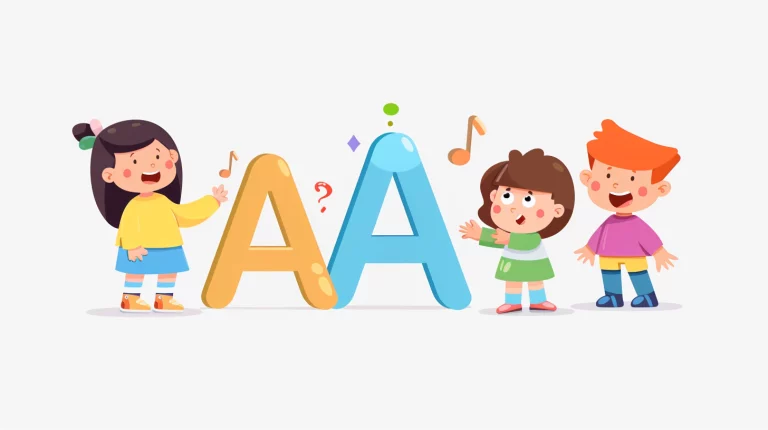What are the Advantages of Using One Syllable Words in Writing?
Have you ever read a text that was hard to understand because it used long, complex words? Clear and concise writing is key to keeping readers engaged.
Using short, one-syllable words in your writing can boost readability and make your content more accessible to a wider audience.
In this blog post, we’ll explore the many benefits of incorporating one-syllable words into your writing style.
From improving comprehension to making your content more memorable, you’ll learn how this simple technique can take your writing to the next level.
Let’s dive in and discover the power of keeping it short and sweet!
General Benefits of Short Words
1. Benefits for Readability

- Easier Processing: When we use short words in writing, the brain can process the text faster. This cuts down on the mental effort needed from the reader. Shorter words mean less time is spent trying to grasp the meaning, letting the reader focus on the main points.
- Increased Comprehension: By choosing short words, writers can boost how well readers understand the text. When complex terms are used, it’s easy for readers to lose track of the key ideas. Keeping the language clear and simple leads to better comprehension overall.
- Examples and Studies: Many studies have shown the link between short words and improved readability. For instance, a study by the American Press Institute found that articles with shorter words were rated as easier to read and more enjoyable. In fields like law and medicine, there’s a push to simplify the language used in documents. When legal contracts or medical instructions are written in plain English, people are more likely to grasp the content fully.
2. Benefits for Accessibility

- Broader Audience Reach: Using shorter words makes your writing accessible to more people. This includes those with learning challenges, readers who speak English as a second language, and younger audiences. By keeping the language simple, you can share your message with a wider group.
- Digital Accessibility: In the digital age, short words are crucial for effective communication. Whether it’s a tweet, a mobile app, or a website, users expect content that’s quick and easy to read. Using concise language helps your message come across clearly on any device.
- Inclusivity: By opting for simple, short words, writers can create a more inclusive environment. It ensures that information is accessible to everyone, no matter their education level or reading skills. We foster a sense of belonging and shared knowledge when we use language that all can understand.
Specific Advantages
1. Clarity and Comprehension
- Easier Word Recognition and Processing: Cognitive psychology offers insight into how our brains handle words. Based on cognitive load theory, the brain processes short words faster than complex ones. This means that simple language can reduce the mental effort needed to grasp the meaning. Eye-tracking studies also support this idea. Research shows that people can recognize and read shorter words more quickly. When writers use concise language, readers can move through the text with greater ease.
- Lower Cognitive Load, Enhancing Comprehension: In educational settings, using short words can make a big impact. By lowering the cognitive load, students can learn and retain information more effectively. This approach makes learning more accessible for all. Keeping the cognitive load low also helps keep readers engaged. When the language is easy to process, people are likelier to stick with the text, reducing the chance of readers getting frustrated or giving up halfway through.
2. Communication Efficiency
- Directness of Messages: Writers can use specific techniques to make their messages more direct and clear. One approach is to choose short, concrete words over longer, abstract ones. This helps readers quickly grasp the main point. Many famous speeches and writings use this technique effectively. Think of the Gettysburg Address or the “I Have a Dream” speech. Both rely on simple, powerful words to convey their message with impact.
- Enhanced Effectiveness in Communication: In marketing and advertising, short words are a valuable tool. Brands often use concise, punchy language to grab attention and communicate their message quickly. Short slogans and taglines stick in people’s minds. The same principle applies to digital communication. Short words are essential on platforms like Twitter, where space is limited. They allow writers to express ideas clearly and efficiently. In the fast-paced world of online content, using simple language can make a big difference in getting your message across.
Impact on Different Types of Writing

1. Academic Writing
- Clear Explanation of Complex Ideas: In academic writing, simple language can help make complex theories more accessible to a wider audience. By breaking down complicated concepts into clear, concise terms, writers can bridge the gap between experts and learners.
For example, Stephen Hawking’s book A Brief History of Time is known for explaining advanced physics concepts in a way that the general public can understand. Hawking uses simple analogies and straightforward language to make complex ideas more relatable.
- Avoidance of Misinterpretation: Precise, direct language is crucial in academic writing to avoid misinterpretation of arguments. When writers use clear, specific words, there’s less room for ambiguity or confusion.
Many academic papers have benefited from using simple language to ensure clarity. For instance, a study on climate change might use terms like “rising temperatures” instead of “anthropogenic global warming” to make the findings more accessible to non-specialists.
3. Business and Professional Writing
- Increased Impact on Communications: In the business world, simple language can make proposals and reports more persuasive and easily understood. When key points are conveyed clearly, stakeholders are more likely to grasp the message and take action.
A great example is Apple’s “Think Different” campaign. The slogan uses simple, powerful words to communicate the brand’s mission and values. This straightforward approach helped Apple stand out and connect with customers.
- Building Trust Through Clarity: Jargon-free language is essential for building trust with clients and stakeholders. When businesses use clear, simple terms, they value transparency and want to communicate effectively.
Many companies have seen success by adopting simpler language in their communications. For example, a financial firm might use plain English to explain investment options, making clients feel more informed and confident in their decisions.
4. Social Media and Online Content
- Enhanced Engagement and Sharing: On social media, messages with simple, clear language tend to be more shareable and engaging. When posts are easy to understand, people are more likely to interact with and spread the content.
Studies have shown that tweets with simple language and short words have higher engagement rates. This suggests that concise, straightforward messages resonate better with social media users.

- Adaptation to Fast-Paced Consumption
In today’s attention economy, concise language is key to capturing and keeping people’s interest online. With so much content vying for attention, simple words can help messages stand out and be quickly understood.Many popular social media campaigns have used simple, catchy phrases. For instance, the ALS Ice Bucket Challenge used the straightforward tagline “Dump a bucket of ice water on your head” to spread awareness and raise millions for charity. The simple call to action helped the campaign go viral.
Case Studies and Research
1. Readability Research
Early studies on readability laid the groundwork for understanding the importance of short words.
In the 1940s, Rudolf Flesch developed the Flesch Reading Ease formula, which emphasized the use of short words and sentences. Similarly, Robert Gunning’s Fog Index, created in 1952, considered word length a key factor in determining readability.
More recent research continues to support the use of simple language. A 2010 study by the Nielsen Norman Group found that users prefer concise, easy-to-understand content online.
The study highlighted the importance of using plain language to improve user experience and engagement.
2. Comprehension and Retention
Academic research has consistently shown that simplifying text improves comprehension and retention.
A 2012 study published in the Journal of Educational Psychology found that students who read simplified texts scored higher on comprehension tests than those who read the original, more complex versions.
In educational settings, using simple language has been shown to facilitate better learning outcomes.
A 2015 study in the Journal of Language Teaching and Research demonstrated that EFL students taught using simplified texts significantly improved reading comprehension compared to those taught with authentic, complex materials.
Real-World Examples
1. Government and Legal Documents
Many government agencies have implemented plain language initiatives to make documents more accessible to the public.
For example, the U.S. Securities and Exchange Commission (SEC) launched the Plain Writing Initiative in 1998, requiring companies to use plain English in their financial disclosures.
This effort aimed to make complex financial information more understandable for investors.
Simplifying language has helped reduce misunderstandings and improve client relations in the legal field. The Clarity International organization has been promoting the use of plain legal language since the 1980s.
They have worked with law firms and government agencies to simplify legal documents, making them more accessible to clients and the general public.
2. Business Communications
Successful marketing campaigns often rely on simple, powerful language to convey their messages. Apple’s “Think Different” campaign is a prime example.
Using short, evocative words, the campaign effectively communicated Apple’s brand values and resonated with consumers.
In corporate communications, using simple language can improve employee understanding and engagement. General Electric (GE) implemented a “simplification initiative” in the early 2000s to streamline internal communications.
By using clear, concise language in employee manuals and training materials, GE saw increased productivity and reduced confusion among its workforce.
3. Health Communications
During public health crises, organizations must communicate effectively with the public to share important information and guidelines.
The World Health Organization (WHO) has emphasized the use of plain language in its COVID-19 communications.
By using simple terms and short sentences, the WHO has conveyed complex health information to a global audience.
Simplifying medical instructions has also improved patient compliance and health outcomes.
A 2014 Journal of General Internal Medicine study found that patients who received simplified discharge instructions had better comprehension and were more likely to follow post-hospital care plans than those who received standard, complex instructions.
Techniques for Implementing One-Syllable Words

Practical Tips for Writers
- Word Choice Strategies: When drafting or revising text, writers should prioritize simplicity in their word choices. Start by considering the simplest word that accurately conveys the intended meaning. This approach ensures that the writing remains clear and accessible to many readers.
To find simpler alternatives for complex words, writers can use tools like thesauruses or word lists. These resources provide synonyms that can help simplify the language without sacrificing precision. However, it’s important to consider the context and ensure that the chosen word fits the tone and style of the writing.
- Sentence Construction: In addition to word choice, sentence structure plays a crucial role in creating clear, easy-to-read content. Writers should aim to construct short, concise sentences primarily using one-syllable words. This approach helps readers process the information quickly and easily.
Using active voice is another effective strategy for simplifying language. Active-voice sentences tend to be more direct and use simpler words than passive-voice constructions. By focusing on the subject of acting, writers can naturally incorporate more one-syllable words into their sentences.
- Editing for Clarity: Revising drafts with simplicity in mind is an essential step in the writing process. When editing, writers should look for opportunities to replace complex words with one-syllable alternatives. This may involve breaking long sentences into shorter ones or rephrasing ideas using simpler language.
Peer reviews can be incredibly helpful in identifying areas where language can be simplified. Engaging colleagues or writing partners to provide feedback can offer fresh perspectives and suggestions for improvement. Collaborating with others can also help writers develop a keen eye for spotting and replacing complex words.
Tools and Resources
- Readability Checkers: Software tools like Hemingway Editor and Grammarly can be valuable assets for writers seeking to improve readability. These programs analyze text and suggest simplifying language, highlighting complex words, and offering simpler alternatives.
To use these tools effectively, writers should input their drafts into the software and review the suggested changes. While not all suggestions may be appropriate for every context, these tools can help identify patterns and opportunities for simplification.
- Online Dictionaries and Thesauruses: Comprehensive online resources like Merriam-Webster and Thesaurus.com can be incredibly useful for finding one-syllable synonyms. These platforms often include features that allow users to filter words by complexity or syllable count.
When using these resources, writers should consider the context and connotation of each word. It’s important to choose synonyms that accurately convey the intended meaning and maintain the tone of the writing. Exploring the definitions and examples provided can help ensure that the selected word is appropriate for the given situation.
- Writing Workshops and Webinars: Participating in writing workshops or webinars can provide valuable insights and practical experience for improving writing skills. These educational opportunities often focus on specific techniques, such as clear writing or effective communication.
By engaging in these interactive learning experiences, writers can gain hands-on practice in simplifying language and receive feedback from experts and peers. The skills and knowledge acquired through workshops and webinars can be directly applied to future writing projects, helping writers consistently produce clear, concise content.
Conclusion
Lastly, using one-syllable words in your writing can significantly improve readability, comprehension, and engagement.
By simplifying your language, you make your content accessible to a wider audience and ensure your message is clearly understood.
Whether you’re writing academic papers, business reports, or social media posts, incorporating short words can help you communicate more effectively.
To refine your writing, use the tools and resources available, such as readability checkers and online thesauruses.
So, the next time you write, challenge yourself to keep it short and sweet – your readers will thank you!








